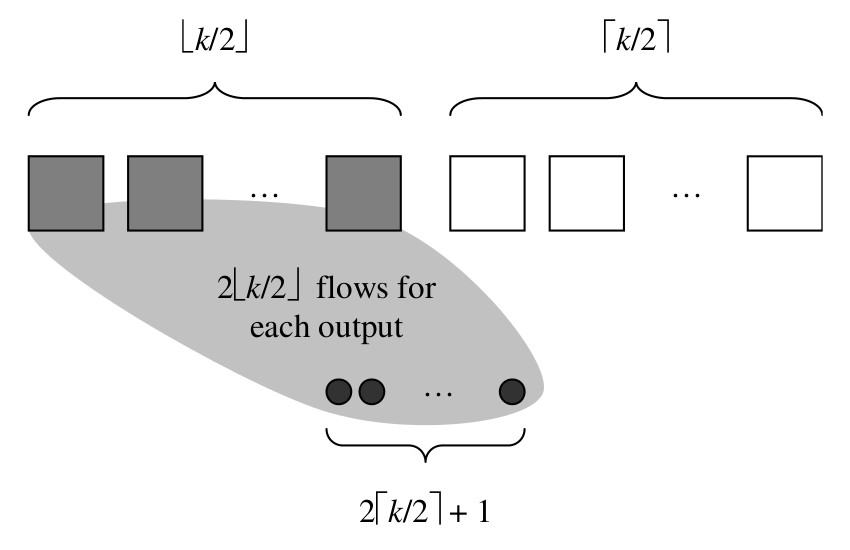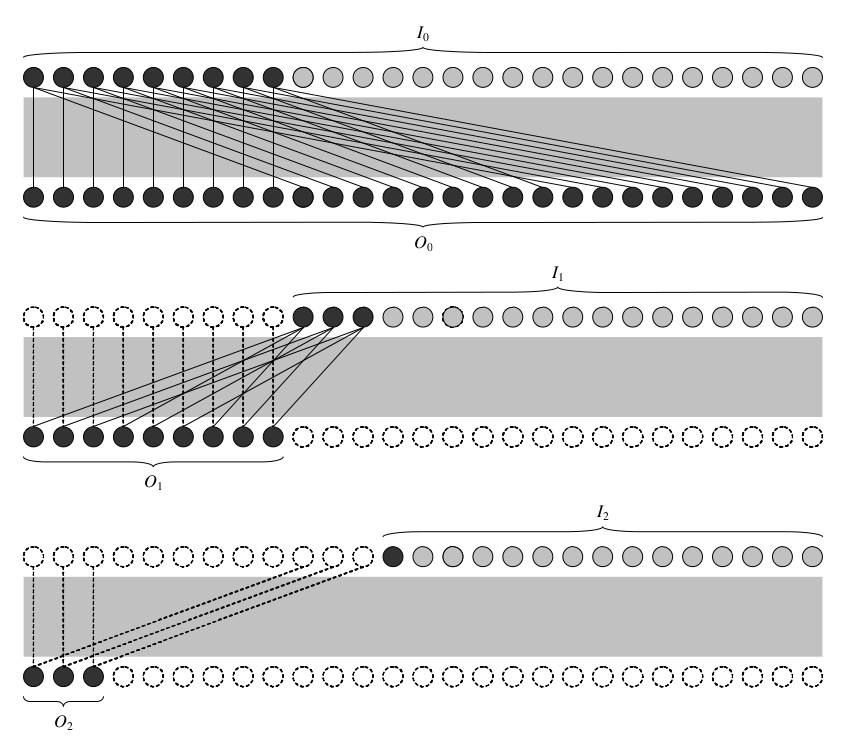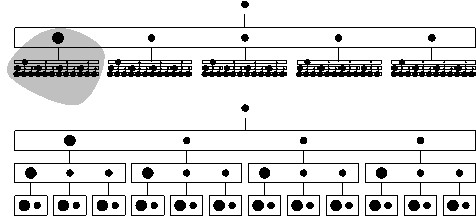
|
Scheduling and Load Balancing
One approach to overcome the speedup is to balance
packets across multiple switches each running at a lower speed.
Here, simple load balancing algorithms can achieve throughput probabilistically,by providing a bound on the expected length of buffers, at the cost of reordering packets.
Our current work explores the limitation of such an approach highlighting
the relationship among three
properties of load balancing: Throughput, Liveliness (will some flow starve?), and Ordering. Only
two of these can be achieved simultaneously (work in progress).
Packet reordering problem is strongly undesired in
practice. It can be avoided by routing packets of
the same flow through exactly one switch. However, using combinatorial
techniques, we proved that this family of (online) flow based algorithms
will only
achieve a throughput of at most 1/3 the maximum
throughput.
Moreover, we proved that this bound is tight by designing
an optimal online with a competitive ratio of 1/3.
Such theoretical bounds on performance are very important. For
instance, a flow based routing algorithm that achieves a 1/3
throughput is indeed optimal (since this represents the theoretical
bound). On the other hand,
knowing that every priority based algorithm must operate at a speedup of at
least 1.5, entices us to look for alternative architecture. We contributed a method to run copies of the same existing priority based
algorithm on multiple switches while avoiding any speedup per switch.
In addition,
we show that it is possible to design algorithms for multiple
switches that guarantee a bounded amount of packet reordering, while
keeping full throughput, and requiring neither speedup nor the use of traditional input (or even output)
buffers.
We also work on other resource allocation problems such as balancing colored balls in bins, the carpool problem, and game theoretic
approaches for channel allocation in radio networks. Finally, we are investigating a new direction to study social networks, and other similar structures such as wikiedia pages and open source code, using simplicial complexes, a generalization of graphs where relations are not necessarily pairwise (but still form a subclass of hypergraphs).
|



